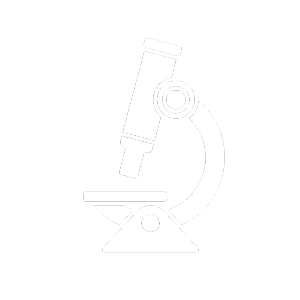A recent research paper on a rare autoimmune disorder, juvenile jermatomyositis (JDM), highlights CHOC’s increasing use of artificial intelligence (AI) to improve care and better understand complex disease processes.
The study, done in collaboration with Lurie Children’s Hospital and Northwestern University, was one of a series of studies on JDM led by Louis Ehwerhemuepha, PhD, director of the Computational and Data Science Program of the CHOC Research Institute, and Dr. Lauren Pachman, MD, the the retired and longtime head of the JDM clinic at Lurie Children’s Hospital with a host of other clinicians, scientists, and students.
The study established that nailfold capillaroscopy (NFC) – images of the nails captured during treatment – may be used together with AI to understand disease activity with the ultimate goal of by avoiding expensive and tedious biomarkers. Dr. Pachman provided the clinical context and support for the project which was translated to corresponding AI tasks.
The AI model development went through several phases with collaborative contributions from Chloe Martin-King, PhD, Ryan Kassab, MS, Dr. Ehwerhemuepha, and Peyman Kassani, PhD.
According to Dr. Ehwerhemuepha and Dr. Kassani, a former postdoc from Stanford University, provided brilliant contributions around explainable AI with scholarly simplification to the corresponding lightweight convolutional neural network architecture.


The AI model analyzes images of microvascular abnormalities located just a few millimeters beneath the nailfolds of fingers as captured by the nailfold capillaroscopy.
Such non-invasive digital analysis powered by AI could empower clinicians to perform time-consuming and costly clinical assessment on a mobile app, say the authors of the paper, “Artificial intelligence for nailfold capillaroscopy analyses – a proof of concept application in juvenile dermatomyositis,” published in November 2023 in Springer Nature’s Pediatric Research Journal.
The early-stage study was designed to show evidence of efficacy but more extensive studies and models over the next few years could lead to clinical applications that promote the equitable use of AI.
High performance in detecting disorder juvenile dermatomyositis (JDM)
JDM usually presents itself with skin rash, fever, fatigue, and muscle weakness.
The disorder triggers the immune system to attack blood vessels throughout the body, inflaming the muscles.
There are many complex processes involving skin and muscle engagement during the course of the disease.
Consequently, the authors were amazed at the high-performing AI model that was capable of capturing disease activity as defined by the Disease Activity Score developed by Dr. Pachman.
In other words, NFC-Net, the deep neural network AI model the study team created, achieved high performance in differentiating patients with JDM from the controls, as well as detecting disease activity as measured by the disease activity score.
The database used was from Lurie Children’s Hospital and is one of the largest known database for JDM. A subset used for the study consisted of 111 patients with JDM, 31 controls, and 1,120 NFC captured between 1990 and 2020 due to the rarity of the disease.
AI tool provides ease of use
Dr. Kassani said the advantages of the NFC-Net is that it’s very lightweight and explainable, meaning it’s scalable to large-scale data and easy to use on edge-based devices, and allows human users to comprehend and trust the results and output created by an explainable AI algorithm. This customized CNN would be also easily merged to standard CNN architectures, the study authors say.
“We were able to analyze images captured by clinicians using everyday devices and show that there is promise in predicting clinical states and outcomes of interest,” Dr. Ehwerhemuepha explained. “This has paved the way for additional studies and models to determine whether we can then predict expensive biomarkers for JDM, and if we succeed at this, it will reduce the cost of care and increase accessibility potentially through mobile applications accessible to developed, developing, and underdeveloped nations.”
More AI-related studies coming from CHOC
Dr. Ehwerhemuepha said the team will conduct one more related study over the next two years.
“This AI tool has the potential to greatly assist physicians in determining whether JDM is in the active phase,” he said, adding that there is active research by other groups but this study may be one of the first.
The study is one of the first at CHOC using explainable AI, said Dr. Ehwerhemuepha, whose group is involved in supporting more than 120 research projects and over 20 AI-related studies at CHOC.
The project was made possible by of the first-round of the CHOC Chief Scientific Officer (CSO) grants. It also was supported by the Vivian Allison and Daniel J. Pachman Fund, the DenUyl Family Fund, the Cure JM Foundation, and other donors. Also contributing was the Wellesley College Honors Program. The REDCap database is supported by NUCATS and funded in part by a Clinical and Translational Science award (CTSA) grant from the National Institutes of Health.

Learn about pediatric research and clinical trials at CHOC




